Face to face with the past
I was able to visit another of the genocide memorials that are dotted around the Cambodian countryside as I made my way from Kampot to Kep yesterday. About five kilometres after leaving Kampot, the village of Chumkriel and its pagoda holds a secret I haven't yet got to the bottom of. Housed no more than ten metres from the vihara of Wat Chumkriel are the remains of about 100 unknown victims of the Khmer Rouge regime, which are kept in a new wooden memorial behind a seated Buddha. The head monk was asleep and couldn't be disturbed and the young monks I met had no idea of the history behind the skulls and bones contained within the wooden case. DC-Cam suggest in a report from the site in 1995 that the bones were brought from other burial sites in the Kampot district but that's where the trail runs cold. Two rows of skulls and one of bones lie in the case with old wooden Buddha statues next door to them. After leaving Wat Chumkriel, I made a return visit to Wat Kompong Tralach, a memorial I had visited before, just past the White Horse statue, on the way to Kep. This had been the site of two mass graves and the bodies of about 750 victims were believed to have been deposited in the memorial when it was constructed. Today, the shabby cement stupa contains two shelves of skulls, bones and a large termite mound and is in poor condition. These are two of the 80 or so genocide memorials in Cambodia, erected at the end of the Khmer Rouge regime as a permanent reminder of the atrocities they carried out. Many have fallen into disrepair through neglect.
Labels: Wat Chumkriel, Wat Kompong Tralach
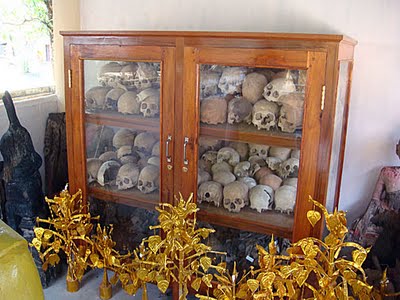
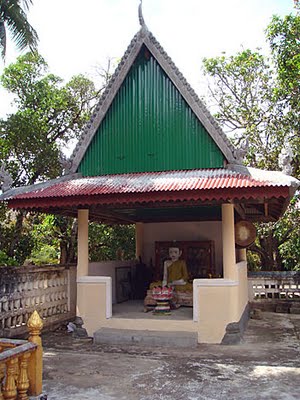
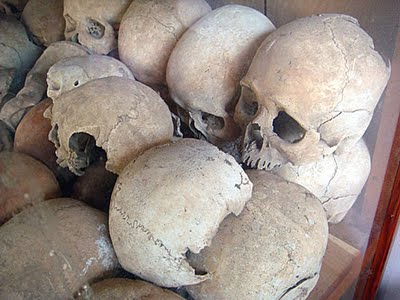
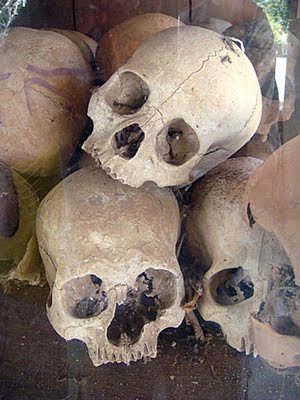
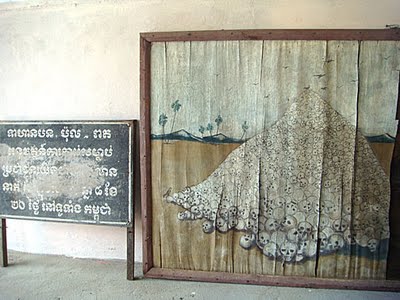
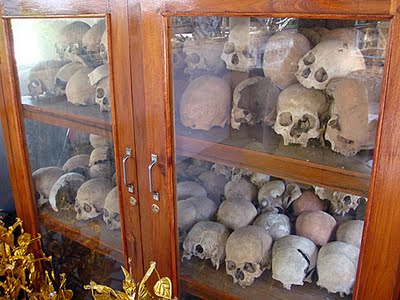
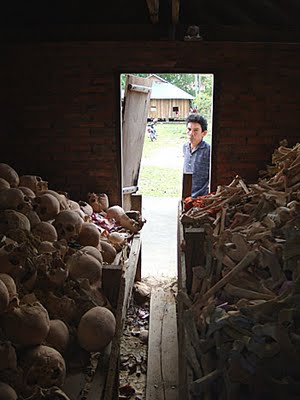
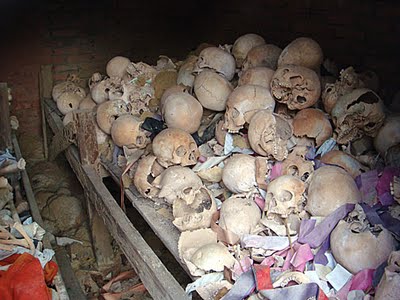
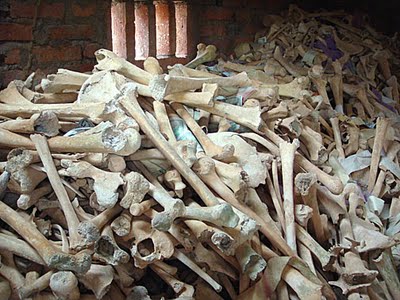
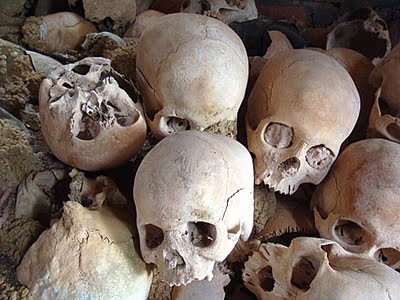
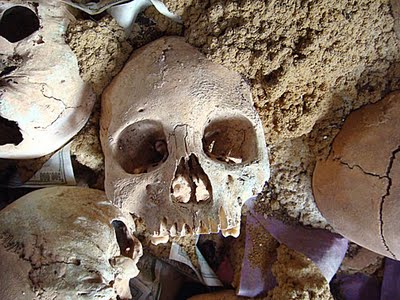
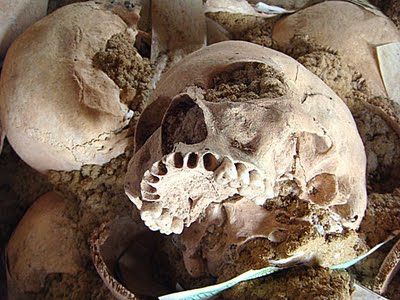
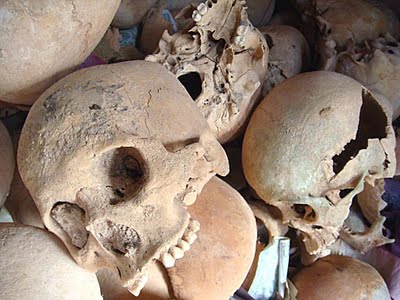


3 Comments:
It's hard to believe that each skull was a living breathing human being that had their life stolen away.
James,
that is a very valid point you make and one which I have thought about too. And why I personally think it is important that these genocide memorials around the country should be preserved and looked after, instead of neglected as they are in the main, today.
Each one of the skulls you see in my photos - which I post as a way to shock people into believing that these memorials were built to honour the deceased, not to showcase them - was a human being who lost their life because of the Khmer Rouge policies when they ran the country in the 1970s. Those years (and policies) changed Cambod1a forever and affected everyone living here at that time. It may be 30 years since the memorials were erected, but the aftermath of that regime still affects all of Cambodia today. Those that lost their lives should be remembered and honoured, both at a family level and at a national level. These memorials can act as a focus for that national level remembrance, albeit at a regional basis. That's why I feel so disappointed when I see memorials left to rot away with neglect.
Each one of these victims deserves to be treated with respect and that's another reason why the memorials should be better looked after, especially those inside the grounds of pagoda's where the monks/laymen/local population are well-placed to give them the attention they deserve.
Andy
Of course, the temples were built to honour the deceased, its only your blog and the way you edit pictures that seem to showcase them. - Hugo
Post a Comment
<< Home